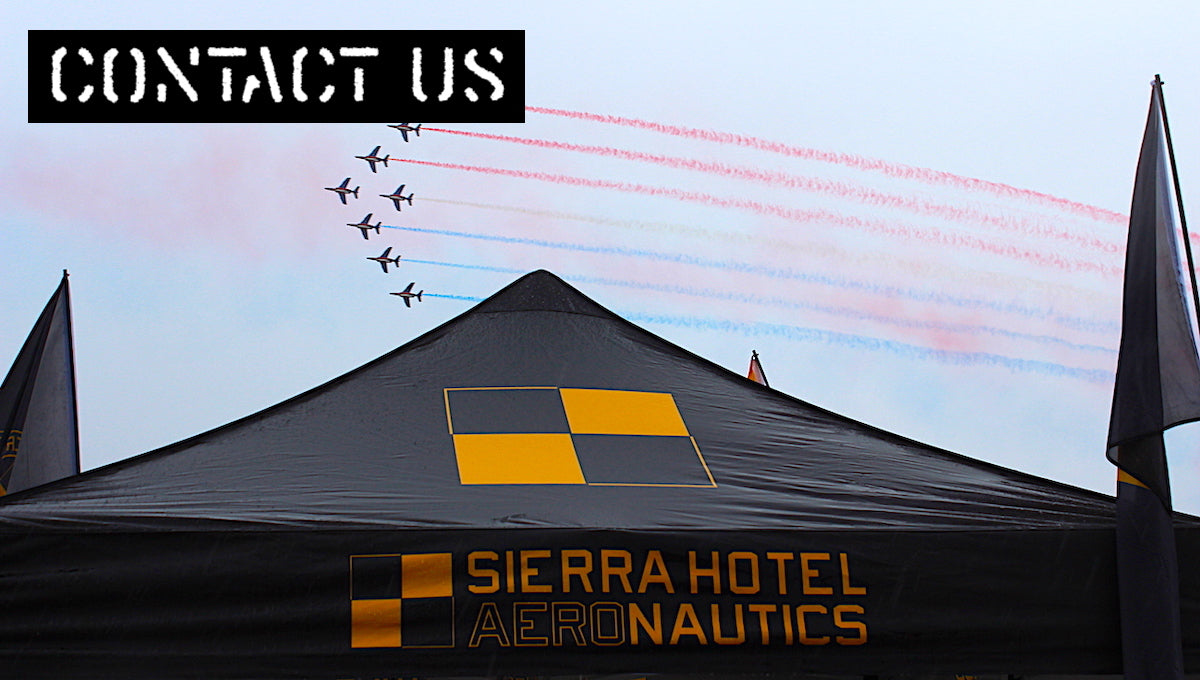Chemtrails
Sorry...there is no such thing as Chemtrails. Dihydrogen Monoxide may sound scary, but in reality, it is simple H2O, better known as water. That is what condensation trails, or "contrails," truly are... simple aircraft-induced clouds.
Sometimes, people seem to get confused by the meaning of different kinds of vapour present around an aircraft in various stages of flight, so we figured we would try to clear it up a bit...

A Vapour Cone, Shock Collar, Shock Egg - Cumulobadass:
A visible cloud of condensed water, a vapour cone, is typically observed as an aircraft or object approaches transonic velocity. Atmospheric water then condenses and thus becomes visible, as air pressure varies suddenly across shock waves associated with supersonic flow speed.
Atmospheric condensation around aircraft is also associated with low-pressure regions in subsonic flight and can typically be observed in damp conditions, but this does not result in conical condensation clouds.
Condensation cones appear in what was described as a Prandtl-Glauert singularity.
In addition to making the shock waves themselves visible, water condensation can also occur in the trough between two crests of the shock waves produced by the passing of the object. However, this effect does not necessarily coincide with the acceleration of an aircraft through the speed of sound or Mach 1.

Wingtip vortices:
Are circular patterns of rotating air left behind a wing as it generates lift. One wingtip vortex trails from the tip of each wing. Wingtip vortices are sometimes named trailing or lift-induced vortices because they also occur at points other than at the wing tips.
Wingtip vortices are associated with induced drag, the imparting of downwash, and are a fundamental consequence of three-dimensional lift generation.
The cores of the vortices are sometimes visible because water present in them condenses from gas (vapour) to liquid and sometimes even freezes, forming ice particles.
Condensation of water vapour in wing tip vortices is most common on aircraft flying at high angles of attack, such as fighter aircraft in high g maneuvers or airliners taking off and landing on humid days.

Engine Exhaust Condensation;
The main products of hydrocarbon fuel combustion are carbon dioxide and water vapor. At high altitudes, this water vapor emerges into a cold environment, and the local increase in water vapor can raise the relative humidity of the air past saturation point. The vapor then condenses into tiny water droplets, which freeze if the temperature is low enough. These millions of tiny water droplets and/or ice crystals form the contrails. The time taken for the vapor to cool enough to condense accounts for the contrail forming some way behind the aircraft's engines. At high altitudes, supercooled water vapor requires a trigger to encourage deposition or condensation. The exhaust particles in the aircraft's exhaust act as this trigger, causing the trapped vapor to condense rapidly.

Contrails:
Short for "condensation trails" or vapor trails are long, thin artificial (man-made) clouds that sometimes form behind aircraft. Their formation is most often triggered by the water vapor in the exhaust of aircraft engines but can also be triggered by the changes in air pressure in wingtip vortices or in the air over the entire wing surface. Like all clouds, contrails are made of water in the form of a suspension of billions of liquid droplets or ice crystals.
Depending on the temperature and humidity at the altitude the contrail forms, they may be visible for only a few seconds or minutes or may persist for hours and spread to be several miles wide. The resulting cloud forms may resemble cirrus, cirrocumulus, or cirrostratus.

Distrails;
Where an aircraft passes through a cloud, it can clear a path through it; this is known as a distrail (short for "dissipation trail"). The plane's warm engine exhaust causes existing water droplets to evaporate, leaving a clear wake through an otherwise cloudy sky
Clouds form when invisible water vapor ( H2O in gas phase) condenses into microscopic water droplets ( H2O in liquid phase) or into microscopic ice crystals ( H2O in solid phase). This may happen when air with a high proportion of gaseous water cools. A distrail forms when the heat of engine exhaust evaporates the liquid water droplets in a cloud, turning them back into invisible, gaseous water vapor.

Fuel Dumping:
(fuel jettison) Emergency situations necessitating an expedient landing. where the aircraft weight exceeds maximum landing weight. Dump rates measured in tones per minute

Fire Fighting Aircraft - Tankers
The use of aircraft to combat wildfires. Chemicals used to fight fires may include water, water enhancers such as foams and gels, and specially formulated fire retardants.

Cloud Seeding
Cloud seeding is a true and existing form of weather modification, a method utilizing aircraft that disperse substances (silver iodide and frozen carbon dioxide), into the air that serve as cloud condensation or ice nuclei, altering the microphysical processes within the cloud. The usual intent is to increase precipitation (rain or snow), along with hail and fog suppression are also widely practiced in airports.
Cloud seeding has never been statistically proven to work. Results indicate that there is in fact a measurable effect, but an extremely marginal one. Snow or rain quantities in some places under certain conditions, may increase precipitation levels by a small amount.












Leave a comment